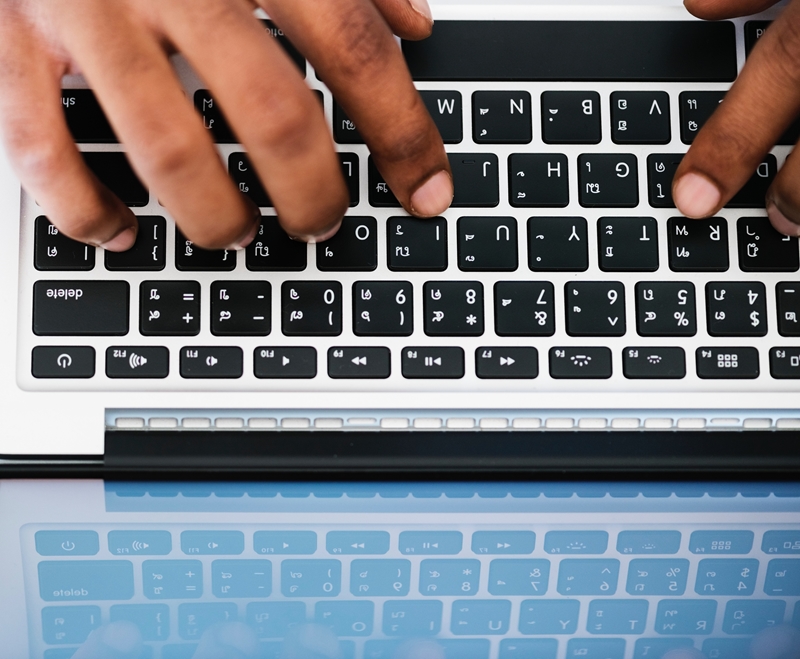-
BLOGS
-
-
This page contains some of our most recent blog articles.
To become an EAN Member where you can access all of the member resources please join here
-
< back
Executive assistant skills: How to increase typing speed
Posted on 16 August 2019

Increasing your typing speed is about making it automatic. With practice, your fingers know exactly where they're going and you hardly have to think about reaching the right keys. When you know the keyboard, you'll naturally start writing more quickly.
How to increase your typing speed
1) Learn to touch-type
Looking at the keyboard every time you need to type a letter slows you down. Touch-typing requires you to memorise the position of the keys, so your fingers can find the letters without having to look away from your screen. You can focus on your work, knowing your fingers are automatically moving to the right keys.
A crucial part of touch-typing is learning to type with two hands, not two fingers. Not only is it much harder to memorise key location when you're only moving two fingers, it also takes longer to move between letters.

Increase your speed by learning to touch-type. 2) Try different types of keyboard
The QWERTY keyboard, named because of the layout of the upper left keys, is the one many of us are familiar with and is commonly found in offices. However, another option is the DVORAK keyboard, where the letters are laid out in a totally different order. On a DVORAK keyboard letters are positioned according to how frequently they're used in the English language. The most common letters are in the middle row, with vowels on the left and consonants on the right.
When you use a DVORAK your hands shouldn't have to stray as far from the middle row as they do with a QWERTY keyboard and this allows you to type more quickly. However, this really comes down to personal preference. Try both designs and see what works for you. Some people swear by the DVORAK, others return to the QWERTY.
If you are considering a change, it's worth knowing that the DVORAK keyboard may reduce the effects of RSI as there is less movement involved. Another option is the ergonomic keyboard, designed to minimise wrist pain and discomfort by allowing the hands to rest more naturally when typing. By being more comfortable you may find you type faster, as well as improve RSI.
3) Know where to place your hands
Whichever keyboard you choose, understanding the layout and what this means for the position of your hands is key in improving your speed and being able to touch type.
Your hands should always hover over the middle row of keys. Also called the home row, your fingers should naturally return here after every tap so you maintain a central position. This allows you to reach all the keys easily and with minimal movement. If you use all four fingers for typing, this makes even more sense as your little fingers deal with the outermost keys, and your index the most central. On the QWERTY keyboard, the letters F and J have a small bump on the keys to help you identify the middle row without looking down. Your right hand should hover around the keys JKL and your left at ASDF.
For visual help with memorising letter placement try a colour-coded keyboard. Depending on the design, letters are grouped according to which of your fingers should be reaching for them.

Getting the right style of keyboard can make it easier to type more quickly. 4) Practise with online tests
Online tests allow you to practise typing quickly without worrying about ruining your Executive's latest report. They generally provide text for you to copy into a different box within a time limit. When you're finished, the website tells you how many words you got through and how accurate you were.
You can go back to these tests time and again to track whether or not you're improving. Notice whether you need to work on accuracy or speed, and whether one affects the other.
5) Check content and topic before you begin typing
One way to get quicker when you have a specific typing task to complete quickly is to check what's involved before you start. Knowing what words you'll be typing allows your mind to subconsciously prepare your fingers for unusual or repetitive words.
This comes naturally if you're taking meeting minutes before tidying them up, for example. However, if you have no idea what's contained in a document, flick through before you begin.

Make it easier to type quickly by finding out what you're writing about before you begin. How can you measure your typing speed improvement?
The standard measurement for typing speed is referred to as WPM. This stands for words per minute, and explains how much you're likely to get through in a specific time frame. Some recruiters use this in job advertisements to signal the level of expertise and experience they're looking for when filling an administrative role. Online tests almost always quote WPM alongside an accuracy rating.
An average person types around 40 WPM. However in a role where typing is essential, recruiters might be looking for 60 WPM or even higher if it's the main purpose of the job.
If you're keen to develop your administrative skills, take a look at the professional courses we offer at Executive Assistant Network.
-
To view all of our blog articles, please click here